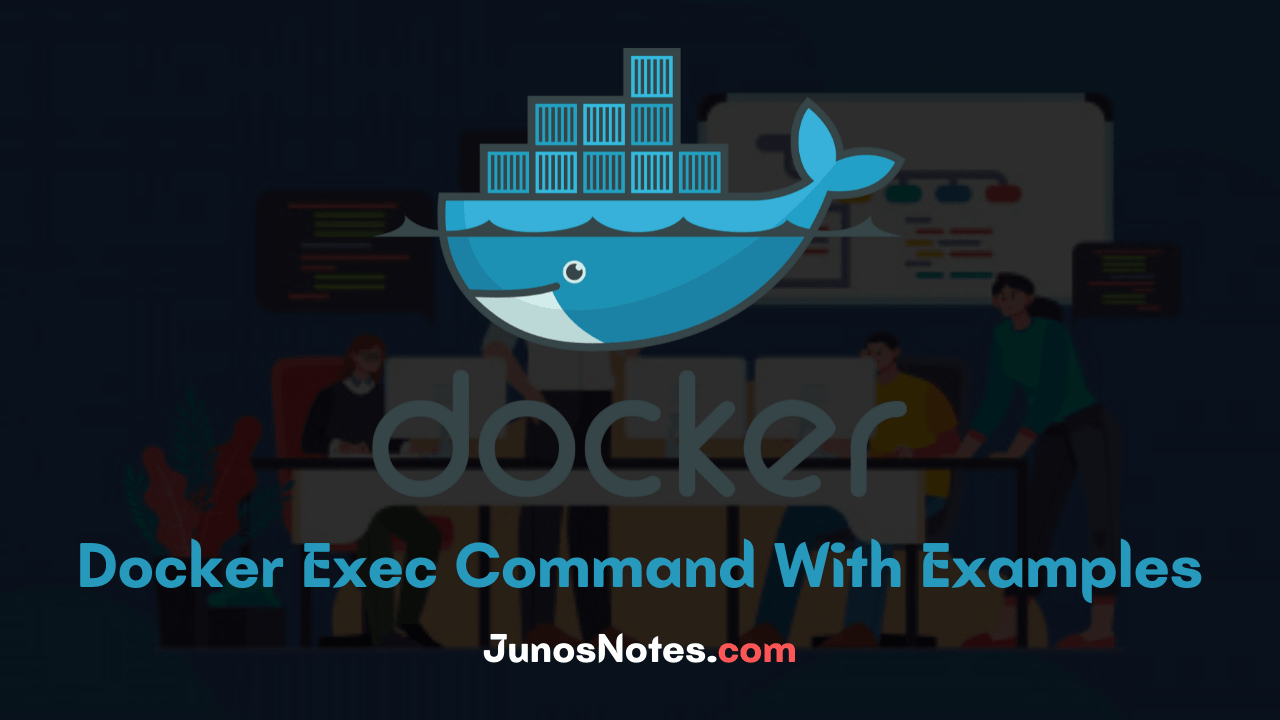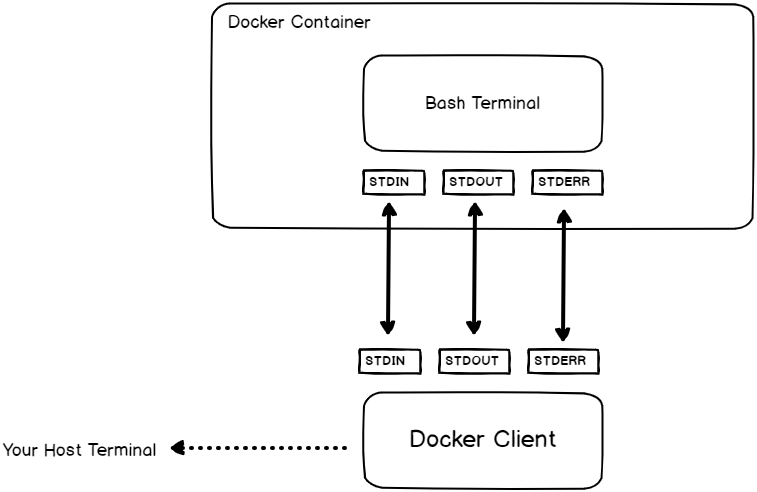Developers who need full-fledged information about Docker and their commands with examples can stick to Junosnotes.com especially this tutorial. As it was completely explained regarding the Docker Exec Command with Examples.
Before going to the main topic of today’s, let’s have a look at Docker. It is a containerization platform founded in 2010 by Solomon Hykes that offers features to install, deploy, start and stop containers.
The command that helps to execute commands on running containers is known as the Docker exec command and makes it possible to access a shell example or start a CLI to manage your servers.
Get the main part of data about it by going through this tutorial and keep focusing on learning the docker exec command efficiently & effortlessly.
- What is Docker Exec Command?
- Docker Exec Syntax
- Prerequisites
- Docker Exec Bash / Docker Exec -it
- Docker Exec Interactive Option (IT)
- Docker Exec as Root
- Docker Exec Multiple Commands
- Executing a command in a specific directory
- Docker Run vs Exec
- Set Environment Variables
- How to Run a Docker Exec Command inside a Docker Container?
What is Docker Exec Command?
One of the useful and best commands to interact with your running docker containers is the Docker exec command. By using the docker exec, you will likely have the need to access the shell or CLI of the docker containers you have deployed when working with Docker.
Docker Exec Syntax
In order to execute commands on running containers, you have to execute “docker exec” and specify the container name (or ID) as well as the command to be executed on this container.
$ docker exec <options> <container> <command>
As an example, let’s say that you want to execute the “ls” command on one of your containers.
The first thing that you need to do is to identify the container name (if you gave your container one) or the container ID.
In order to determine the container name or ID, you can simply execute the “docker ps” command.
$ docker ps CONTAINER ID IMAGE COMMAND CREATED STATUS 74f86665f0fd ubuntu:18.04 "/bin/bash" 49 seconds ago Up 48 seconds
Note: The “docker ps” is also used in order to determine whether a container is running or not.
As you can see, the container ID is the first column of the ‘docker ps’ output.
- How To Install InfluxDB Telegraf and Grafana on Docker
- How To Install Docker on Ubuntu 18.04 & Debian 10
- How To List Docker Images | What is Docker Image | docker image ls command
Now, to execute the “ls” command on this container, simply append the ‘ls’ command to the ID of your container.
$ docker exec 74f86665f0fd ls bin boot dev etc home
Awesome, now that you know how you can use the “docker exec” command, let’s see some custom examples on the usage of this command.
Prerequisites
If you want to go with the examples provided on this page then you should have to adhere to the following requirements:
- Any recent version of the Docker Desktop will work on Windows, Linux, or macOS. If you want to install Docker on Windows 10 or Home or Pro then make use of the link provided here.
- Moreover, you should need more knowledge of docker logs for a better understanding of docker commands. So check out this Docker Logs Complete Guide.
Docker Exec Bash / Docker Exec -it
The most popular usage of the “docker exec” command is to launch a Bash terminal within a container.
To start a Bash shell in a Docker container, execute the “docker exec” command with the “-it” option and specify the container ID as well as the path to the bash shell.
If the Bash is part of your PATH, you can simply type “bash” and have a Bash terminal in your container.
$ docker exec -it <container> /bin/bash # Use this if bash is part of your PATH $ docker exec -it <container> bash
When executing this command, you will have an interactive Bash terminal where you can execute all the commands that you want.
Awesome, you are now running an interactive Bash terminal within your container.
As you can see, we used an option that we did not use before to execute our command: the I and T options.
What is the purpose of those options?
Docker Exec Interactive Option (IT)
If you are familiar with Linux operating systems, you have probably already heard about the concept of file descriptors.
Whenever you are executing a command, you are creating three file descriptors:
- STDIN: also called the standard input that will be used in order to type and submit your commands (for example a keyboard, a terminal, etc..);
- STDOUT: called the standard output, this is where the process outputs will be written (the terminal itself, a file, a database, etc..);
- STDERR: called the standard error, it is very related to the standard output and is used in order to display errors.
So how are file descriptors related to the “docker exec“?
When running “docker exec” with the “-i” option, you are binding the standard input of your host to the standard input of the process you are running in the container.
In order to get the results from your command, you are also binding the standard output and the standard error to the ones from your host machine.
As you are binding the standard input from your host to the standard input of your container, you are running the command “interactively”.
If you don’t specify the “IT” option, Bash will still get executed in the container but you won’t be able to submit commands to it.
Docker Exec as Root
In some cases, you are interested in running commands in your container as the root user.
In order to execute a command as root on a container, use the “docker exec” command and specify the “-u” with a value of 0 for the root user.
$ docker exec -u 0 <container> <command>
For example, in order to make sure that we execute the command as root, let’s have a command that prints the user currently logged in the container.
$ docker exec -u 0 74f86665f0fd whoami root
Great, you are now able to run commands as the root user within a container with docker exec.
Docker Exec Multiple Commands
In order to execute multiple commands using the “docker exec” command, execute “docker exec” with the “bash” process and use the “-c” option to read the command as a string.
$ docker exec <container> bash -c "command1 ; command2 ; command3"
Note: Simple quotes may not work in your host terminal, you will have to use double quotes to execute multiple commands.
For example, let’s say that you want to change the current directory within the container and read a specific log file in your container.
To achieve that, you are going to execute two commands: “cd” to change directory and “cat” to read the file content.
$ docker exec 74f86665f0fd bash -c "cd /var/log ; cat dmesg " (Nothing has been logged yet.)
Executing a command in a specific directory
In some cases, the purpose of executing multiple commands is to navigate to a directory in order to execute a specific command in this directory.
You can use the method we have seen before, but Docker provides a special option for this.
In order to execute a command within a specific directory in your container, use “docker exec” with the “-w” and specify the working directory to execute the command.
$ docker exec -w /path/to/directory <container> <command>
Given the example we have seen before, where we inspected the content of a specific log file, it could be shortened to
$ docker exec -w /var/log 74f86665f0fd cat dmesg (Nothing has been logged yet.)
Docker Run vs Exec
Now that we have seen multiple ways of using the “docker exec” command, you may wonder what is the difference with the “docker run” command.
The difference between “docker run” and “docker exec” is that “docker exec” executes a command on a running container. On the other hand, “docker run” creates a temporary container, executes the command in it, and stops the container when it is done.
For example, you can execute a Bash shell using the “docker run” command but your container will be stopped when exiting the Bash shell.
$ docker run -it ubuntu:18.04 bash root@b8d2670657e3:/# exit $ docker ps (No containers.)
On the other hand, if a container is started, you can start a Bash shell in it and exit it without the container stopping at the same time.
$ docker ps CONTAINER ID IMAGE COMMAND CREATED STATUS 74f86665f0fd ubuntu:18.04 "/bin/bash" 49 seconds ago Up 48 seconds $ docker exec -it 74f86665f0fd bash root@74f86665f0fd:/# exit $ docker ps CONTAINER ID IMAGE COMMAND CREATED STATUS 74f86665f0fd ubuntu:18.04 "/bin/bash" 58 seconds ago Up 58 seconds
Awesome, you know the difference between “docker run” and “docker exec” now.
Set Environment Variables
Setting environment variables is crucial for Docker: you may run databases that need specific environment variables to work properly.
Famous examples are Redis, MongoDB, or MySQL databases.
In order to set environment variables, execute “docker exec” with the “-e” option and specify the environment variable name and value next to it.
$ docker exec -e var='value' <container> <command>
For example, let’s have a command that sets the “UID” environment variable to print it out within the container.
To achieve that, we would use the “-e” option in order to set the environment variable.
$ docker exec -e UID='myuser' 74f86665f0fd printenv UID 'myuser'
How to Run a Docker Exec Command inside a Docker Container?
- Make use of docker ps to get the name of the existing container.
- Later, use the command docker exec -it <container name> /bin/bash to get a bash shell in the container.
- Or straight away use docker exec -it <container name> <command> to execute whatever command you specify in the container.
Conclusion
In this tutorial, you learned about the “docker exec” command: command used to execute commands on your existing running containers.
If you are interested in DevOps or Docker, we have a complete section dedicated to it on the website, so make sure to check it out!


